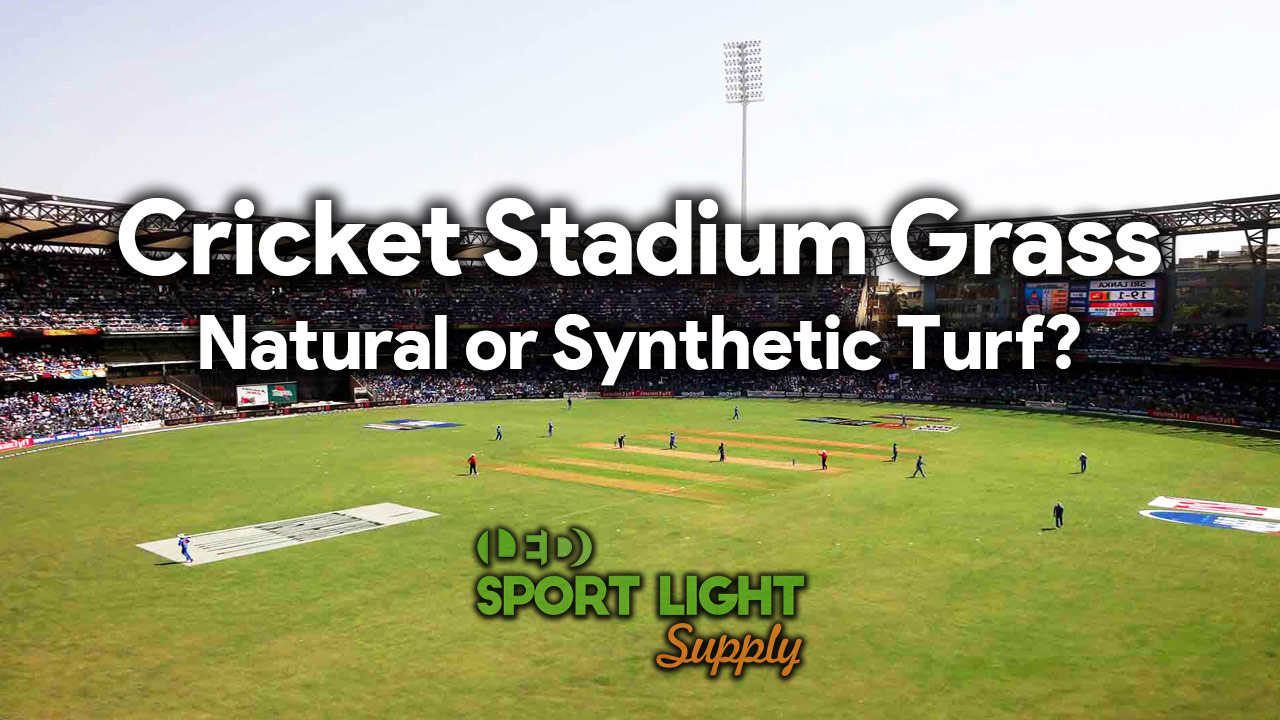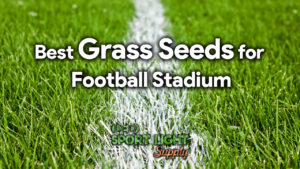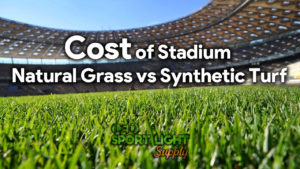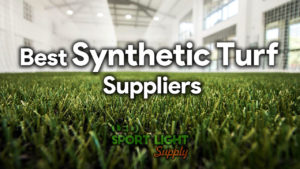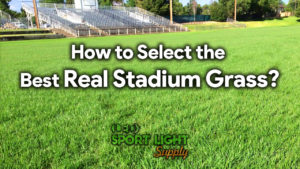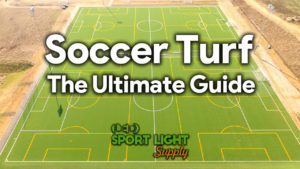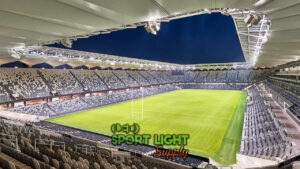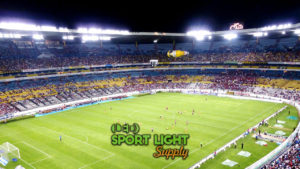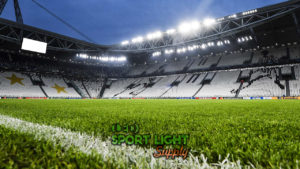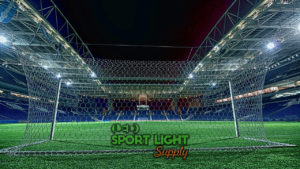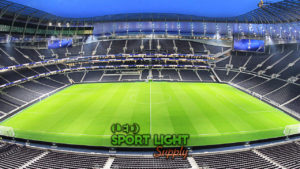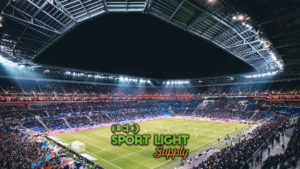The International Cricket Council (ICC) only wishes the best natural grass field or artificial turf for players around the globe. Of course, there is a difference between a sod lawn and a synthetic outfield. So here is a brief guide to help you understand which choice might be best for your stadium or indoor sports facility.
First, you will read about the most common grass seeds for cricket. The plant crown height will be discussed as well shortly after that. Next, we will plunge into the main topic of discussion: is it better a natural oval or an inorganic playing surface?
While discussing maintenance, you may find other reasons to pick one VS the other. Or you might need to check the following section on grass seed price and expenses. Finally, I will lay down some tips you might find valuable for your project.
What types of grass are in a cricket field and stadium?
The grass seed type varies depending on where you plant it. For the pitch, the most popular options are Bermuda grass and Perennial ryegrass. For the outfield, a blend of several species and wear-tolerant varieties work best. Usually, you find Tall Fescues, Meadow Grasses, and Common Bent.
The main difference relies on how tall you should mow them. But you can read more on this detail in the next section. Here are some details on the different species to grasp the gist of what makes these grasses unique:
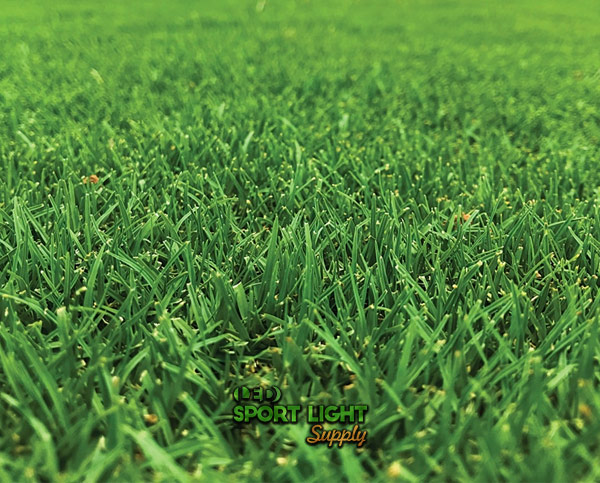 Bermuda grass (Cynodon dactylon) multiplies both underground and above the ground. In detail, this species creates a web of roots (rhizomes) that spread all over the place. Then, the leaf blades appear on the surface and become stolons. That is, they expand on the surrounding areas. The stolons then try to establish their roots. So, you need to maintain the lawn a cut it frequently. As a grass species, Bermuda is very aggressive and heals fast. With just some water and fertilizer, it can overcome most unexpected events and traffic.
Bermuda grass (Cynodon dactylon) multiplies both underground and above the ground. In detail, this species creates a web of roots (rhizomes) that spread all over the place. Then, the leaf blades appear on the surface and become stolons. That is, they expand on the surrounding areas. The stolons then try to establish their roots. So, you need to maintain the lawn a cut it frequently. As a grass species, Bermuda is very aggressive and heals fast. With just some water and fertilizer, it can overcome most unexpected events and traffic.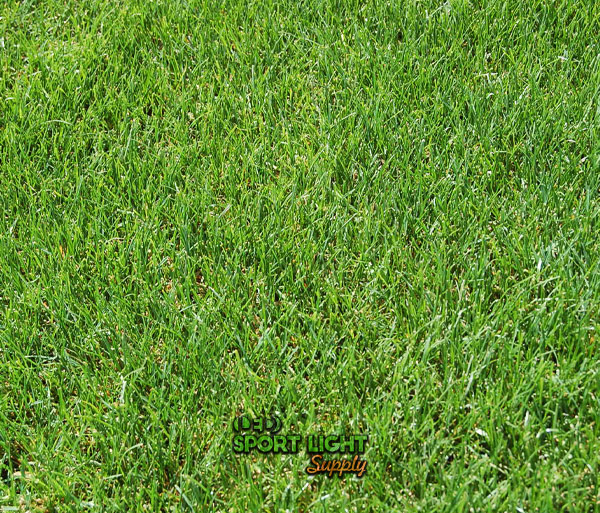 Perennial ryegrass (Lolium perenne) is naturally present in meadows. Although manufacturers sell you better versions of it, you can still find it in semi-natural grasslands. The agriculturally improved seeds will develop into a tall plant with flowers. So, keep it short at all times. When it grows, ryegrass has a very shiny underside of the leaves (stoma). Every time the wind blows, the shiny undersides ripple, thus creating a pleasant visual effect.
Perennial ryegrass (Lolium perenne) is naturally present in meadows. Although manufacturers sell you better versions of it, you can still find it in semi-natural grasslands. The agriculturally improved seeds will develop into a tall plant with flowers. So, keep it short at all times. When it grows, ryegrass has a very shiny underside of the leaves (stoma). Every time the wind blows, the shiny undersides ripple, thus creating a pleasant visual effect.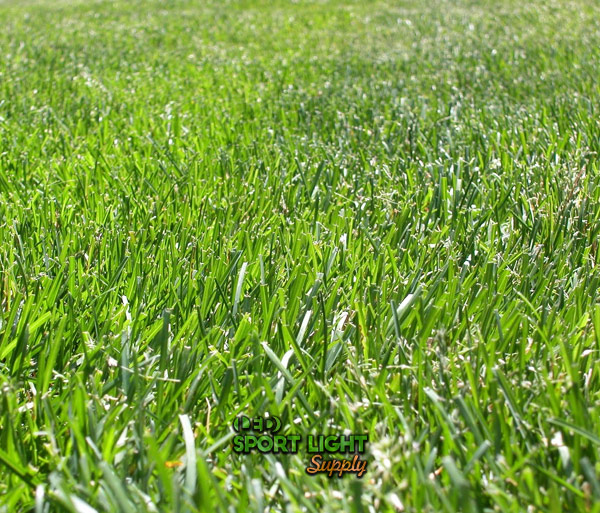 Fescue (Festuca) refers to a broad family of grasses. But mainly, there are two species of fescue that you can commonly find in a cricket stadium. Both of them have needle-like leaves, while other species develop wide blades. The two common species for cricket are Red fescue and Sheep’s fescue. The latter one becomes much more tufted in a single growth area. Instead, Red fescue tends to creep around more. So, the choice between the two depends on how many bare spots you see and the quality of the soil.
Fescue (Festuca) refers to a broad family of grasses. But mainly, there are two species of fescue that you can commonly find in a cricket stadium. Both of them have needle-like leaves, while other species develop wide blades. The two common species for cricket are Red fescue and Sheep’s fescue. The latter one becomes much more tufted in a single growth area. Instead, Red fescue tends to creep around more. So, the choice between the two depends on how many bare spots you see and the quality of the soil.- Common Bent (Agrostis tenuis) is a later flowering species. In general, Bent grasses are soft and silky. Sometimes, manufacturers try to sell you a variety called Creeping Bent. Creeping Bent is better for wetter places as this variety loves humidity. Instead, Common Bent is better for drier, hotter areas. Plus, it is more tufted in its growth than Creeping Bent. So, I would suggest the former one if your stadium is in the Transition Zone.
- Meadow Grasses include any airborne species that lands in your stadium. As long as you regularly cut the lawn, they should not represent a problem.
Cricket stadium grass height
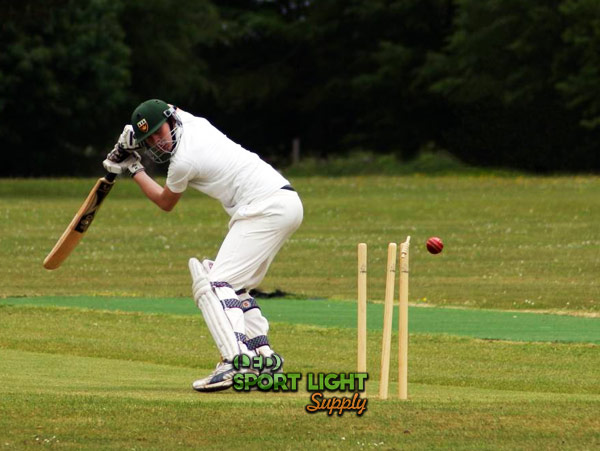 In a cricket stadium, the perfect mowing height can vary slightly. Mainly because the stadium can be in one of three zones: the North, the South, and the Transition Zone.
In a cricket stadium, the perfect mowing height can vary slightly. Mainly because the stadium can be in one of three zones: the North, the South, and the Transition Zone.
The grass is a type of plant that would be very happy to grow as tall as possible. But for sports, the reason we cut it is that it must be functional to the game. For instance, cool-season lawns can be as high as 5 inches and as low as 2 1/2 inches.
The height you select will have a direct impact on the amount of time necessary for maintenance. As well as the amount of money that you will put in the lawn care schedule.
With the correct tools and fertilizers, grass can grow healthy at ultra-low height as well. Especially in the warm season areas where you can keep the grass at 0.5 inches.
The importance of keeping the tufts low
You can force any plant to adapt and grow at any specific height. This is why in most stadiums, the pitch grass is shorter.
Short grass helps both the bowler and the batters. In fact, an ultra-low playing surface lets the batter enjoy giving the ball a whack. Besides, the bowler can focus more on the grip and the delivery stride for fast bowling.
Not every grass species thrive when cut too short. For most varieties, 2 inches is the magic number. But stadium owners should keep the infield as low as possible for better performance.
Letting the grass grow more than 2 inches has some major disadvantages. If you invite kids on the lawn, they will leave marks as they play. The grass blades may bend or break. As a result, you will not be able to mow those sections without extra effort.
Natural grass or synthetic turf?

The ICC Men’s Test Match Playing Conditions states that conditions for play might not be ideal. But they should never be regarded as unreasonable or dangerous. So, this means that even if you have some bare spots, it is ok. As long as the natural grass or synthetic turf does not pose a risk to the safety of any player or umpire, the game will take place.
The choice between natural grass or synthetic turf might reflect your budget or goals. For example, an artificial playing area can cut down maintenance expenses, especially in cold, humid areas. But a natural lawn to host the ICC Cricket World Cup Super League could be a more fitting option.
You can alternate between them over the years. However, you should consider your investments wisely. Each one of these solutions has pros and cons. In fact, the natural grass:
- offers a softer surface but is difficult to maintain in winter
- grows faster in spring and summer, leading to more maintenance costs
- can suffer from fungus and diseases, as well as pests and other animals
Likewise, a synthetic turf:
- requires less maintenance, but you still need an optimal drainage system
- is easy to clean, yet it can become a haven for germs and pathogens if not sanitized
- ensures play during any season and weather condition, even though excessive play can ruin it
Cricket field sod rolls or seeding?
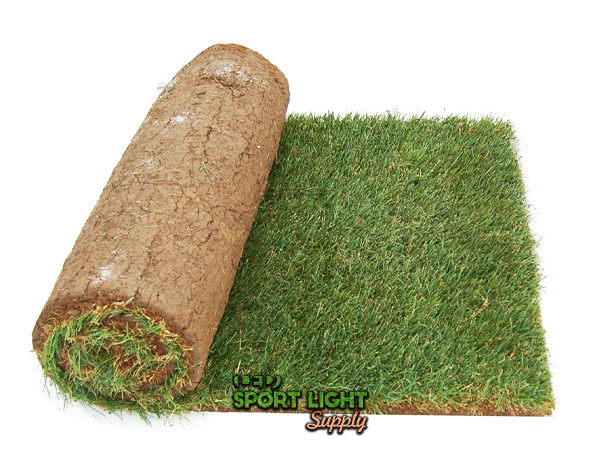 Sod rolls let you patch up a bare space within minutes. In brief, you buy rolls of grass and soil, then install them. But the whole process of using sod rolls is also easy to screw up.
Sod rolls let you patch up a bare space within minutes. In brief, you buy rolls of grass and soil, then install them. But the whole process of using sod rolls is also easy to screw up.
All you need to do to never regret buying a sod roll is understand the basics. Sod rolls must not stay under the sun for more than 24 hours before installing them. If you can put the rolls in a cool spot in the shade, you can store them for two days max. In short, the day you buy them should be the day you lay them down. Even if it is pouring.
High-quality sod rolls are brought off the original fields every single day. Usually, manufacturers cut them early in the morning before sunrise. The grass blades should always look green and healthy.
The only thing you need to do is to loosen up the subsoil of the destination field. On a compacted base, growing a sod roll will be almost impossible. That is, unless you are willing to water it constantly. The simplest solution is to take the existing base material and loosen it up. After all, each sod roll comes with a slight amount of organic material. So, you will make it easier for the sod grass to root and recover from the stress.
Do not add inches of black dirt underneath the sod rolls. Otherwise, you will cause the roots to rot. Instead, add free-draining material in the first 4 inches. The ideal mixture to add would include 2/3 of organic materials and 1/3 of sand. Remember, the goal is to allow drainage and not trap the water beneath the sod roll.
If all this looks complicated, then turn to sow seeds.
Best practices for seeding
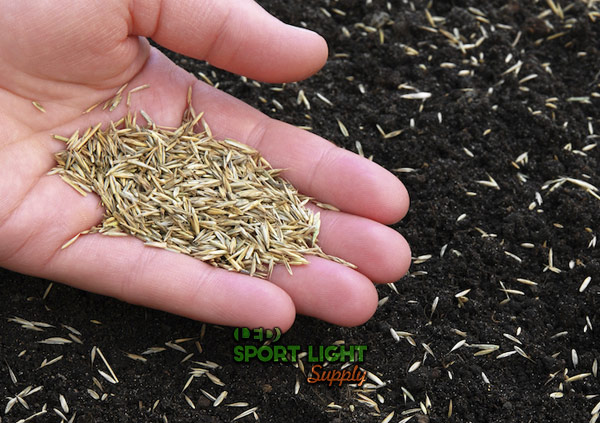 Seeds are the best option if you can wait for them to germinate. Usually, you can use fast-growing species like ryegrass to cover the bare spot fast. But you would still need at least 45 days. Then again, the weather may play against you.
Seeds are the best option if you can wait for them to germinate. Usually, you can use fast-growing species like ryegrass to cover the bare spot fast. But you would still need at least 45 days. Then again, the weather may play against you.
The most important thing to think about when seeding or overseeding is to keep the seeds moist. In detail, you do not need to apply fertilizer at this point. Instead, make sure that the grass seeds are wet and in contact with the ground. Setting the sprinklers with a new schedule is a good idea.
Some cricket stadium owners and lawn care specialists like to use a rake to help the seed touch the ground in patchy spots. Depending on the weather conditions, you might want to water the sowed areas 3 or 4 times a day. Also, keep the birds away from the oval because they can land to eat the germinating seeds or the earthworms that the water lured out.
Ryegrass will germinate between 7 and 21 days. But each grass type has a different germination period. For the best results, always look out for the weather forecast when ready to put the seed. In this way, you can reduce the number of pants that drown from excessive water.
After that, the natural grass will take care of itself. You can make some soil tests to find out any nutrient deficiency and then fertilize accordingly.
Maintenance of outdoor VS indoor cricket ground turf
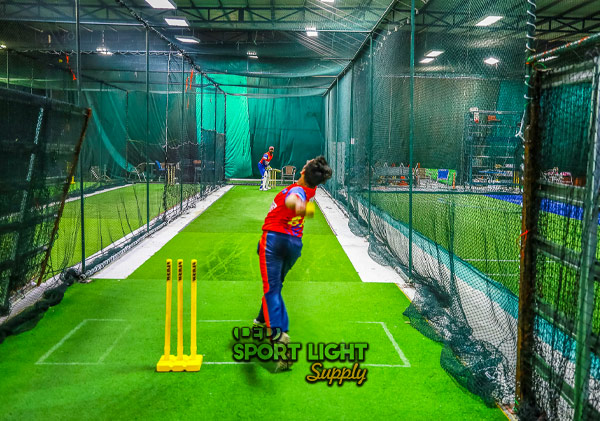 Real grass is not ideal for an indoor cricket ground. As you can imagine, the lack of sunlight is the major obstacle. You would need to spend too much money on lighting for growing the grass.
Real grass is not ideal for an indoor cricket ground. As you can imagine, the lack of sunlight is the major obstacle. You would need to spend too much money on lighting for growing the grass.
Nonetheless, light is not the only thing that natural grass needs. Even if your dome stadium has a transparent dome, air exchange and temperature could become issues. An agronomist would become indispensable to maintain such a microhabitat.
Both real grass and synthetic turf require a drainage and irrigation system. Well, you only need to wash the synthetic turf once a week. But the water still has to go somewhere.
Without a doubt, fake grass is the obvious choice for an indoor sports facility. Cricket is a bat and ball sport that involves two teams with eleven players on each side. So, you have to cover quite a lot of space.
The hard leather ball can reach a speed of up to 90 mph. So, the playing surface must be resistant and resilient. For playing on artificial turf, you will need to select an appropriate, safe infill material. One that complies with the ICC safety standards.
You will need professional equipment to maintain the outdoor cricket oval. Over time, a professional lawn mower will repay itself. But even if you install synthetic turf, you should consider buying a machine that helps you remove the snow in winter.
Cost of cricket stadium grass
Hiring a lawn care company to remove weeds and fertilize the cricket field can cost you up to $10,000 a year. This cost would include overseeding and other strategies to keep the grass green. But it will not cover the cost of sod seeds, which can amount to over $5,000.
You can save money by selecting an affordable blend for the outfield. But you still need to consider the maintenance costs. Depending on your budget, you can invest in equipment and take care of several areas yourself.
The price of synthetic grass can range from $8 to $15 per square foot. On average, the better quality products cost more because they last longer. Plus, they offer better performance.
Low-quality turf can turn into a nightmare quickly. For example, the seams can rupture, or the heat from reflective surfaces can melt the grass. Repairing artificial turf can cost you a lot, so make sure to get a quality product with a great warranty.
Dimensional instability is also a common problem due to the bad installation of artificial turfs. This issue can happen if you buy cheap and hire an installing company that does not know that product so well to install it correctly.
Outdoor artificial turfs absorb heat fast. So, you would have to add the watering expenses before a game during the hot summer days. Mainly because a cricket game lasts hours, if not days.
Where can I buy cricket stadium sod rolls and synthetic turf?
Ideally, you should get sod rolls from dealers near you only. Sod rolls are cut out of their original field and transported within hours to a dispatch center. So, you must install them as soon as possible.
Of course, the timing is also a critical factor for buying sod rolls. You need to install sod rolls in a sunlit area. Besides, you should not buy sod rolls when it is raining for days on end.
Buying local sod rolls is your best option for sod rolls because you can inspect the rolls. Besides, you know the weather in your area is not a problem. You can still buy from big companies that send you the sod rolls quickly from out of town. But you should do your research and make sure the grass type is compatible with your local environment.
On the bright side, you can buy synthetic turf anywhere you like. More importantly, you should request a sample from the manufacturing company before you place an order. Considering several samples can take months. Especially if you want to test them for UV discoloration.
When you lay down the artificial turf, the color you see is usually greener than normal. Over three months, the chemicals inside the grass fiber will react to exposure to UV light. The color might change. As you can imagine, this can be a problem if you are buying a turf roll to repair just a section of the oval.
About DIY installing sod rolls
You can DIY install sod rolls to fix an area of the cricket ground. Depending on the state and size of your project, the installation can be a bit labor-intensive. But overall, you need to take care of seven steps:
1. kill the existing part of the lawn you are replacing and remove it
2. add a suitable mixture of fill dirt and sand, then compact it to minimize settling (you can also use a rototiller to prep the area)
3. set a regular watering schedule to help the rolls successfully root
4. start by laying the sod along the longest edge or boundary first, then stagger each row in a brick-like pattern
5. make sure to bump the edges of each piece of sod tightly to those around it
6. water lightly once you have installed every 200 sq feet of sod
7. use a roller to roll the entire area to ensure solid contact between the sod and the soil beneath it

